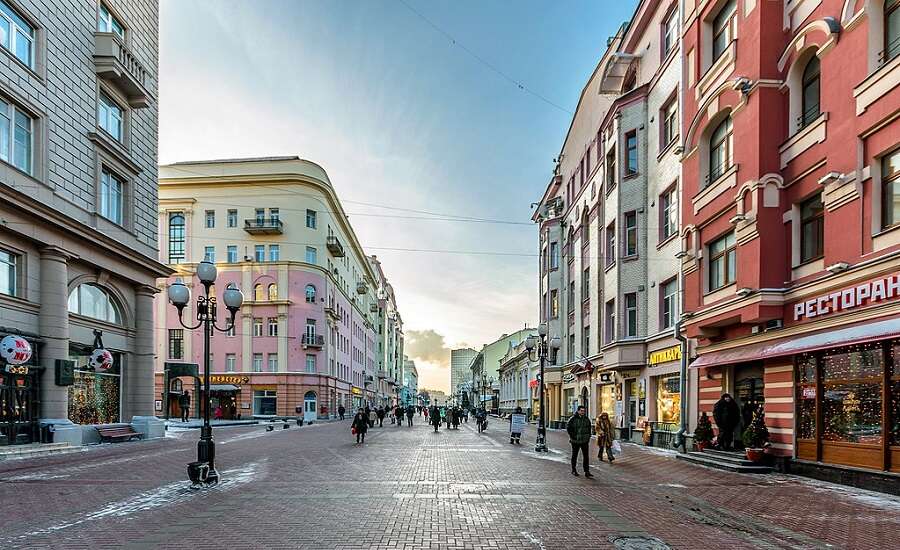
Photo on Wikipedia
The Old Arbat is one of Moscow’s most atmospheric historical streets, and holds an important place in Russian culture and history. What emerged as a garrison and humble settlement for palace artisans then transformed into a prestigious aristocratic street, and later became a melting pot for members of the Russian and Soviet intelligentsia, some of whom immortalised this unique street in their work. Today, the Old Arbat – known by Muscovites simply as ‘Arbat’ – is a bustling tourist hotspot, and the ideal place for an afternoon’s amble to soak up the atmosphere, culture and history of Moscow.
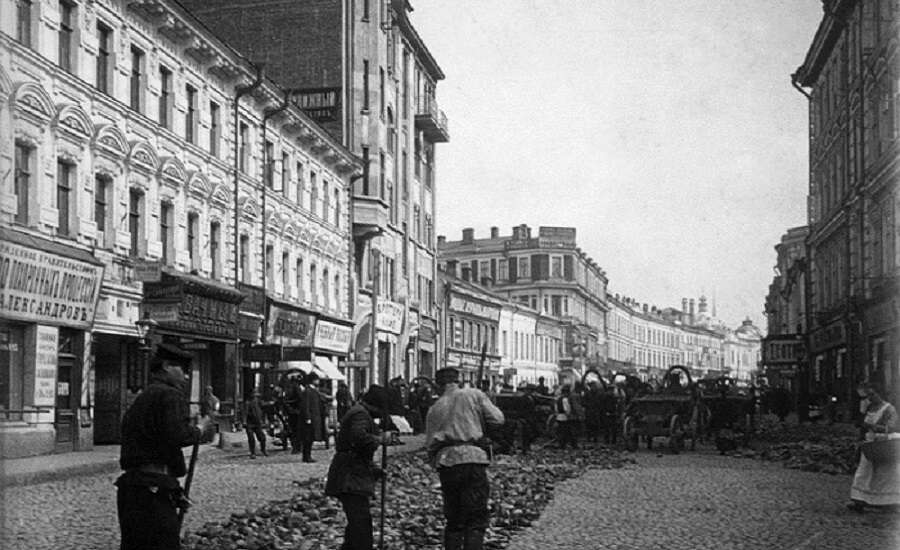
Photo on Wikipedia
The Old Arbat takes its name from the historical Arbat district of Moscow, which is situated to the west of the Kremlin. In the 15th century, this area was an open space beyond Moscow’s city boundaries, where the ancient road connecting Moscow, Mozhaisk and Smolensk began. In the late 15th and early 16th centuries, as Moscow was restructured under Grand Duke Ivan III, this area began to be developed as a settlement for artisans who worked at the palace stables. The main street was named Vozdvizhenka, though it was known by the local people as ‘Arbat’.
Did you know? There is much debate over the etymology of the word ‘Arbat’. Two of the most common theories stipulate that it comes from the Arabic word for suburb, ‘rabad’, brought to Moscow by Eastern traders, or from the Turkic word for cart, ‘arba’, as a cart workshop was located in the area.
The Old Arbat acquired its modern dimensions by the end of the 16th century, beginning at the Arbat Gates of Moscow’s White City fortress walls (today the Arbatskie Vorota Square on the Boulevard Ring road) and extending westwards to another gate in the earth and wood rampart encircling the city (today the Smolenskaya Square on the Garden Ring road). This area in between the two ramparts, which encompassed the Arbat, was known as Skorodom, meaning ‘hastily-built houses’. Throughout the 17th century, the left side of the Arbat remained a community of palace artisans, and on the right side stood a number of Streltsy military garrisons, which had been established by Ivan the Terrible in the mid-1550s.
Did you know? In 1658, Tsar Alexei renamed the Old Arbat ‘Smolenskaya’, but this never caught on.
The abolition of the Streltsy at the end of the 17th century, followed by two devastating fires in 1736 and 1812, brought about the transformation of the Old Arbat into a residential street for Moscow’s most illustrious inhabitants. The garrison land became the property of the nobility, and the burnt-out structures were rebuilt with one or two storey Empire-style and Classical-style mansions surrounded by small gardens. From the mid-1700s to the late 1800s, many of Moscow’s most eminent noble families resided on or near the Arbat, within their number the Tolstoy, Dolgoruky, Sheremetyev, Golitsyn, and Trubetskoy families.
Did you know? Famous residents of the Arbat included Alexander Pushkin, Nikolai Gogol, Lev Tolstoy, and Anton Chekhov.
Towards the end of the 1800s, the Arbat was evolving from an aristocratic residential street into one of Moscow’s most vibrant communities. Members of the intelligentsia from all walks of life –academics, composers, government officials, writers – moved to the Arbat and lived and worked in close proximity. The Old Arbat thus became a melting pot of ideas and cultures, and the excellent businesses and cultural, historical, and academic institutions which were founded on the street contributed to the street’s rich and unique atmosphere.
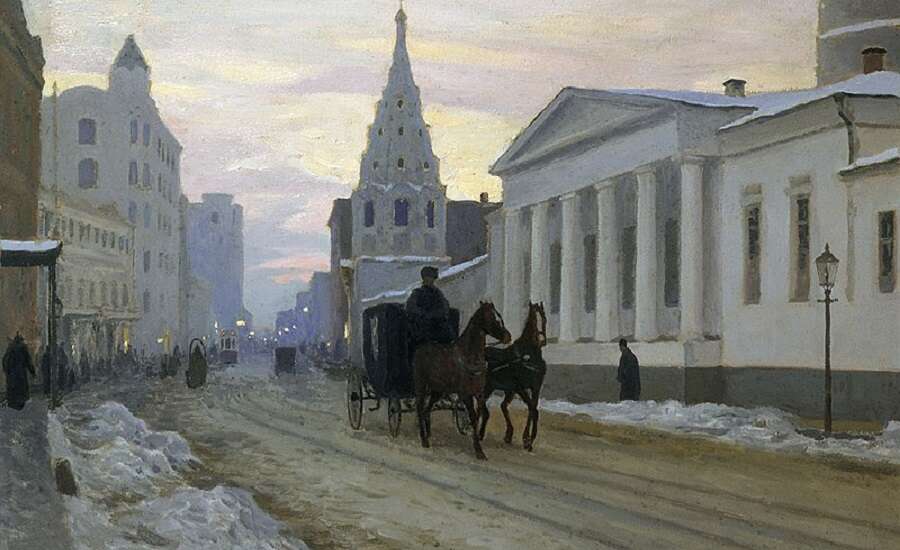
Photo by Гермашев, Михаил Маркианович on Wikipedia
The Arbat’s historic atmosphere unfortunately suffered under Stalin. Many aristocratic mansions were demolished to make way for new buildings, and the remaining mansions were turned into kommunalki (communal apartments). The vibrant buildings of the Old Arbat were painted a uniform grey colour. Although the Arbat’s many bustling businesses had remained open during the New Economic Policy period of 1921-28, which permitted individuals to own small businesses in an effort to boost the economy, in 1928 Stalin renationalised the economy to pursue a policy of collectivisation and industrialisation, and the Arbat’s lively spirit was subdued.
Did you know? From the 1930s-1950s the Arbat was nicknamed the ‘Georgian Military Road’, as Stalin’s motorcade travelled along the street en route from the Kremlin to the Georgian-born leader’s dacha in Kuntsevo.
With the construction of the Novy Arbat (New Arbat) highway in the 1960s, the Old Arbat could undergo transformation once more. An initiative to convert the Old Arbat from a state highway into a pedestrian street was devised and implemented in the 1970s and 1980s. As part of this project, efforts were made to restore the Arbat’s historical appearance. Attention was paid to each house as a separate piece of architecture; the buildings were repainted in different colours and their facades were carefully restored. The street itself was completely replaced, with special bricks laid by hand and cobblestones. The addition of retro streetlamps completed the historical feel.
The Old Arbat once again regained its vibrant atmosphere towards the end of the Soviet period, and became a tourist hotspot following the collapse of the USSR. Shops and cafes sprung up on the street, and throngs of street musicians and artists flocked to the tourist trade. Whilst the Arbat has not retained all of its historical charm over the centuries, a stroll along this wide and bustling street, full of places to eat, drink, and explore Russian history and culture, is a must for anyone visiting Moscow.
Let our expert tour guide reveal the secrets and histories behind the Old Arbat on an Express to Russia tour. We pride ourselves on organizing tours that stretch further and delve deeper than any other excursions.
To make the most of your stroll down the Old Arbat, we’ve compiled a list of interesting sights to look out for.
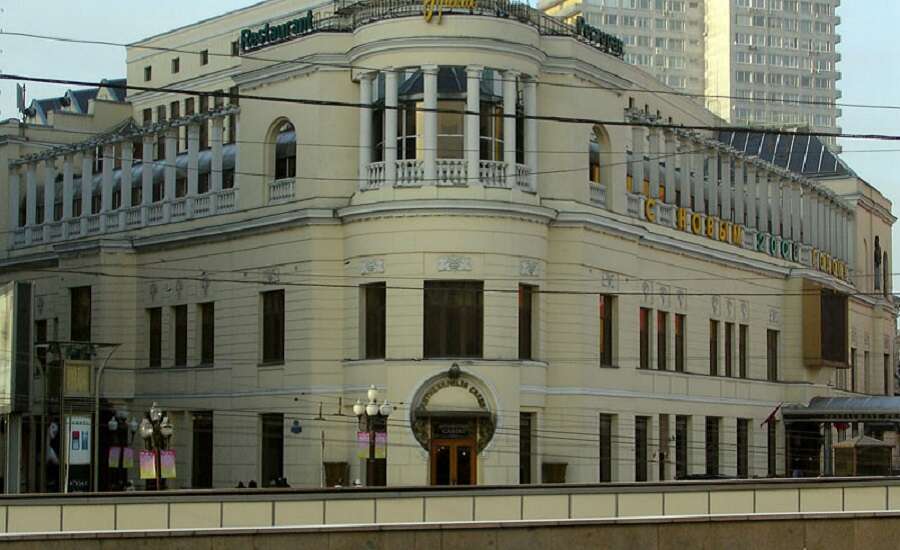
Photo by NVO on Wikipedia
This house was home to the restaurant ‘Praga’ which provided entertainment for the Arbat’s most distinguished residents. Its former patrons included Tolstoy, Chekhov and Repin. Later, the famous tavern and dining room of Mosselprom (the Soviet organisation in charge of Moscow’s food and drink industry) was located here. The Praga restaurant is still open today, and is one of Moscow’s oldest restaurants.
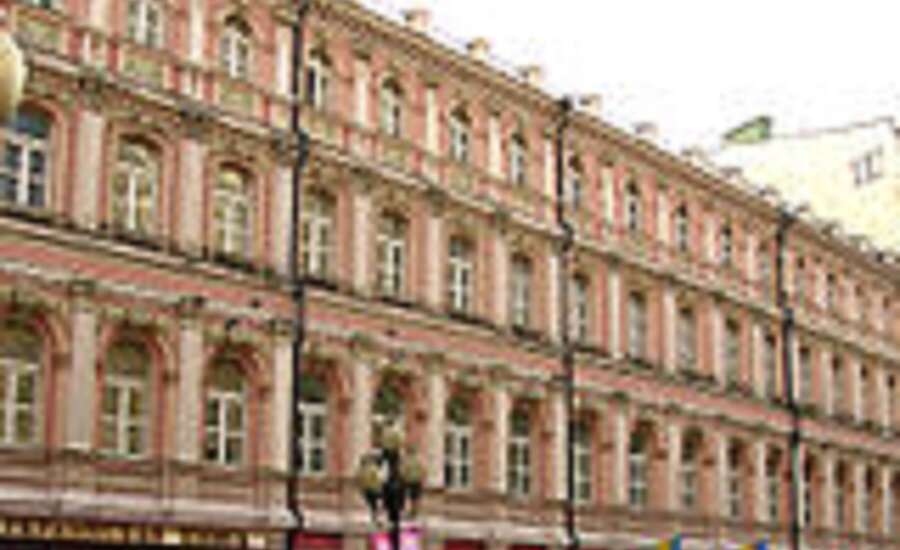
Photo by NVO on Wikipedia
This apartment building was built in the style of Eclecticism at the end of the 19th century. It housed the famous bakery of Filippov in pre-revolutionary times, then a café frequented by writers of the Soviet era, including Vladimir Mayakovsky, Andrey Bely, Sergey Yesenin, Alexander Blok, and Boris Pasternak. Today, it is home to the National Cultural Centre of Ukraine.
Did you know? House No.14 was once rumoured to be a haunted house. Upon inspection by the police, it turned out that the ‘ghosts’ were in fact beggars living in the basement.
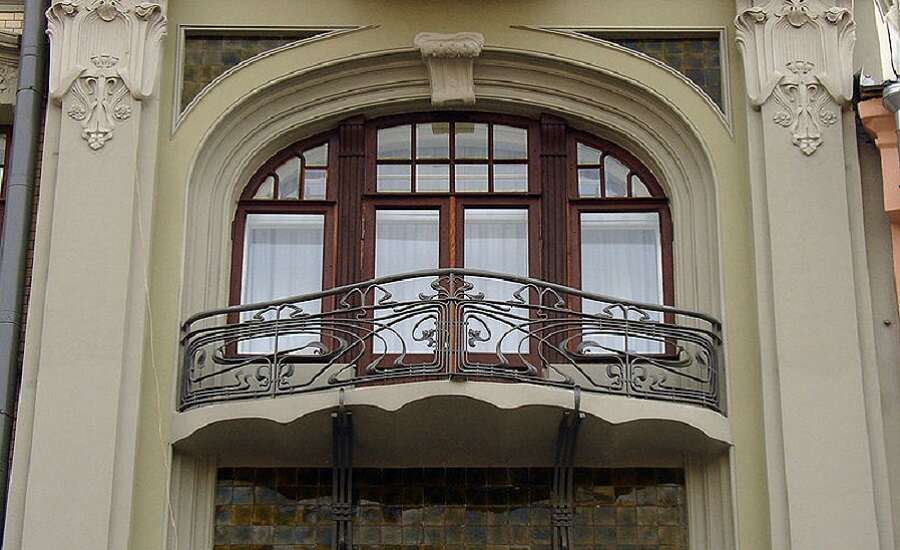
Photo by NVO on Wikipedia
These are luxury apartment blocks and hotels built in the style of Art Nouveau at the turn of the 20th century by architect Nikita Lazarev. They have retained their original features even throughout the Soviet period – a rarity for buildings on the Arbat. No.29 is particularly beautiful - look out for its intricately forged balconies and the unique designs adorning each floor. The former director of the Bolshoi Theatre in the post-revolutionary period, Vladimir Lossky, lived in house no.29.
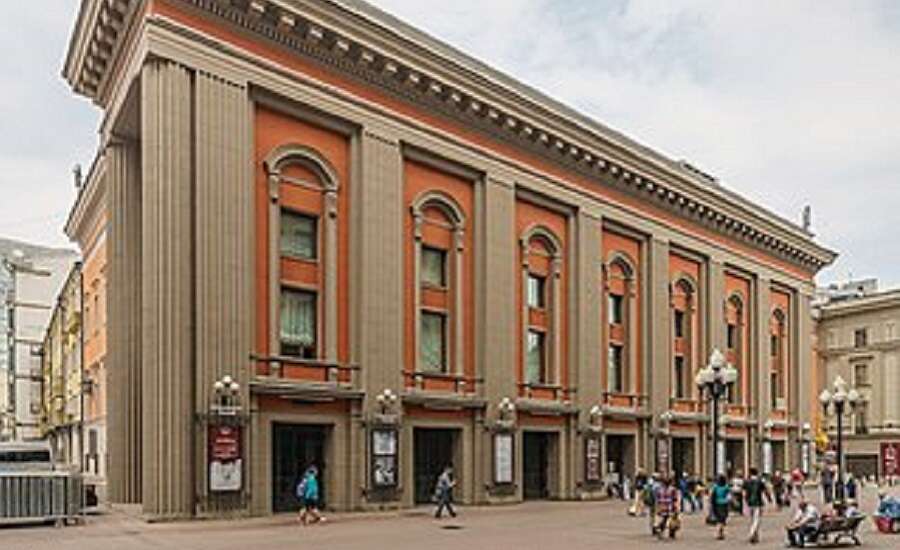
Photo by A.Savin on Wikipedia
The Vakhtangov Theatre is located in this impressive grey and red building designed in the style of Soviet Classicism. The theatre was rebuilt between 1946-1947 after suffering a direct hit from a bomb during the war, and has been operating for nearly a century.
Did you know? On the side of house No.17 is a huge 19x17-metre mural of Marshal Zhukov, Hero of the Soviet Union and the most important Soviet commander during the Second World War, who led the Battle of Stalingrad. The mural was painted in 2015 to commemorate 70 years since the end of the war.
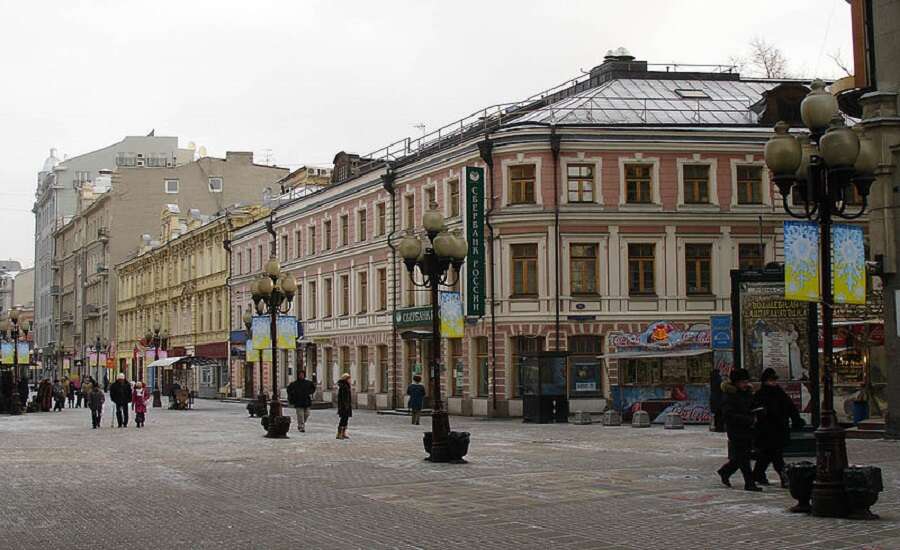
Photo by NVO on Wikipedia
This building housed one of Moscow’s first free maternity hospitals. During the Soviet period, Alexey Losev, one of the most important philosophers of 20th century Russia, lived here for nearly half a century. The Library of the History of Russian Philosophy and Culture was subsequently established here in the memory of Losev and his wife, the philologist Aza Takho-Godi.

Photo by NVO on Wikipedia
This house was constructed in 1913 by architect Valentin Dubovskoy as a luxury apartment building and elite school. Behind the building’s severe Neo-Gothic façade is currently located the House of Actors and part of the Ministry of Culture.

Photo by NVO on Wikipedia
This is the only surviving 18th century house on the Arbat, which belonged to Count Vasily Bobrinsky, the grandson of Catherine the Great and Count Grigory Orlov. The wall of the house which extends alongside Krivoarbatsky Lane is known as ‘Tsoi’s Wall’, as since the death of legendary Russian rock musician Viktor Tsoi in 1990, the wall has been decorated with messages and art in his memory.
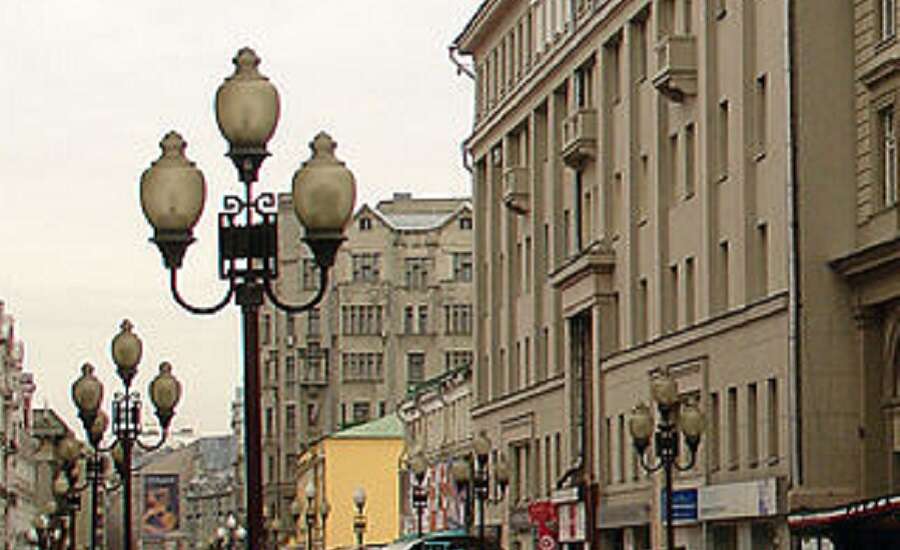
Photo by NVO on Wikipedia
Famous Soviet bard Bulat Okudzhava lived here as a young boy. Okudzhava immortalised the unique atmosphere of the Arbat in poetic songs such as Pesenka ob Arbate (Little song about the Arbat). On the corner of house No.45 and Plotnikov Lane is a monument to Okudzhava.
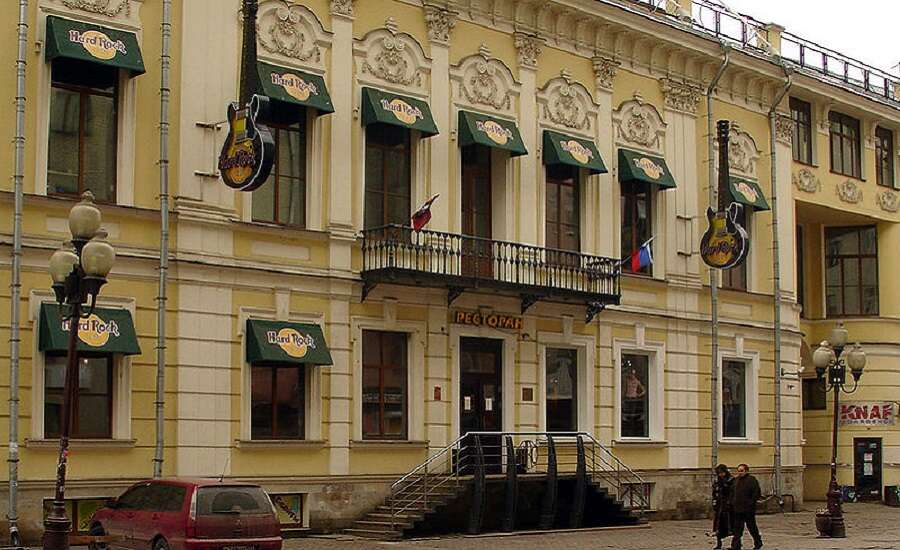
Photo by NVO on Wikipedia
This beautiful mansion with a Baroque façade was owned by the great-grandfather of Ivan Turgenev. It later housed the Moscow Dental School, and an NKVD safe house during the Soviet period.

Photo by NVO on Wikipedia
Soviet author Anatoly Rybakov lived in this building from 1919 to 1933, before being exiled to Siberia until 1937. Rybakov is best known for his dissident book, Children of the Arbat, which was written in the 1960s but not published until 1987, when it became one of the first publications of anti-Stalin literature in Soviet Russia.
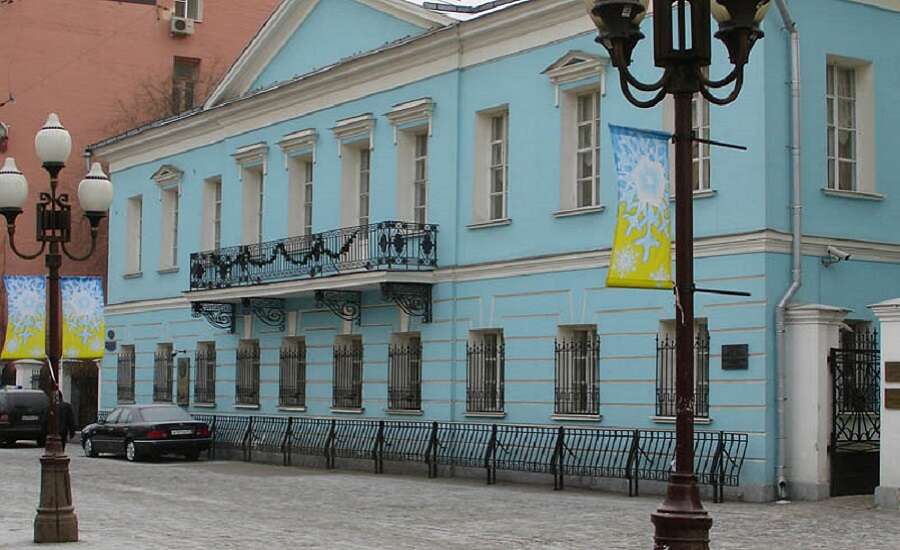
Photo by NVO on Wikipedia
This is the only surviving residence of Alexander Pushkin, and the Memorial Apartment of A.S. Pushkin is located here. Pushkin spent the first few months of his married life in this house in 1831. Later, the building was home to the younger brother of Tchaikovsky, poet Marina Tsvetaeva, and then a Soviet-era theatre run by Vsevolod Meyerhold and Vladimir Mayakovsky. Opposite the house is a statue of Alexander Pushkin and his wife, Natalia Goncharova.
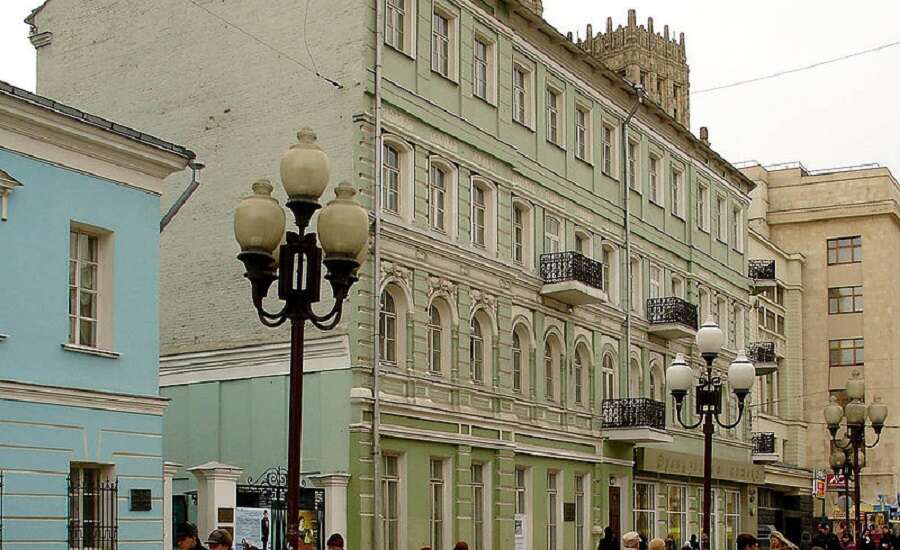
Photo by NVO on Wikipedia
In this building is located the Memorial Apartment of Andrey Bely. The poet spent his childhood living in this house on the Arbat, surrounded by academics and members of the Moscow intelligentsia who were his neighbours. The museum is part of the A.S. Pushkin Museum.
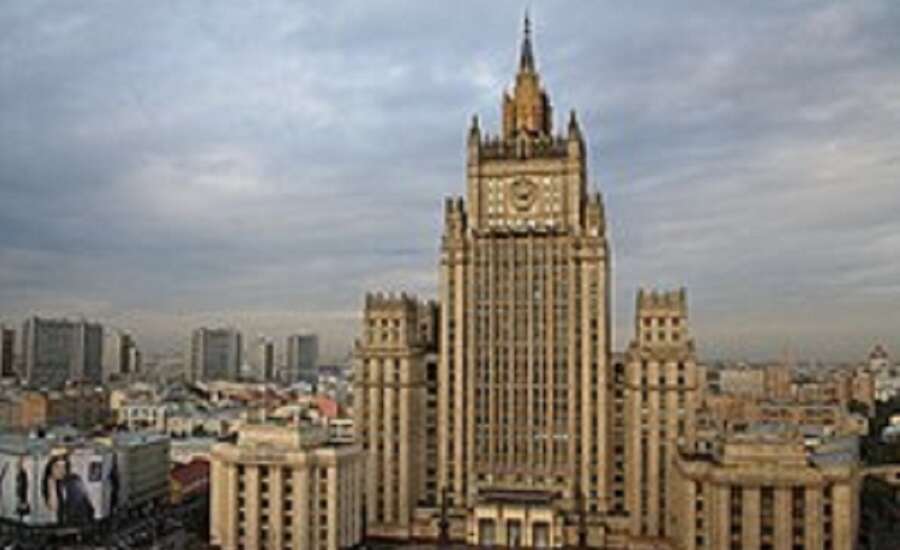
Photo on Wikipedia
At the far end of the Arbat stands the Ministry of Foreign Affairs, one of Stalin’s Seven Sisters skyscrapers. The monolithic 172-metre structure was built from 1948 to 1953 by architects Vladimir Gelfreykh and Adolf Minkus, and has many features of English Gothic architecture. An enormous crest of the USSR remains on the building’s façade.
Essential information for visitors
Smolenskaya is the nearest metro station to the western end of the Arbat (Ministry of Foreign Affairs).
Arbatskaya is the nearest metro station to the eastern end of the Arbat (Restaurant ‘Praga’).
Join us on Facebook
We invite you to become a fan of our company on Facebook and read Russian news and travel stories. To become a fan, click here.
Join our own Russian Travel, Culture and Literature Club on Facebook. The club was created to be a place for everyone with an interest in Russia to get to know each other and share experiences, stories, pictures and advice. To join our club, please follow this link.